Teaching Students with Intellectual and Developmental Disabilities About Being Safe With Our Bodies
Mandy Farrar, SART Prevention Education Intern – Weld County
A child with special needs will inspire you to be a special kind of person.
In our schools we have some of the most diverse groups of students being given the opportunity to get a positive and impactful education. Students with varying disabilities are getting the chance to interact with peers and receive equitable education. It is such an honor to get the chance to work with students with intellectual and developmental disabilities through SAVA. These students are significantly underestimated in what they can do and working with them every week on such a serious topic has allowed for them to grow and for our team to make meaningful and impactful connections.
Some history
People with disabilities historically have experienced an extensive amount of systematic oppression and marginalization. In ancient Greece people with disabilities were killed or abandoned in the woods. In the Roman Empire courts, people with disabilities were kept as jesters for nobility. During the Renaissance they experienced acts of infanticide. During early colonial America people with disabilities were kept in cellars and shackled to their beds in correctional institutions if family support was not available. A majority of care for people with exceptional needs was from the family at home because children with exceptional needs were not allowed out in public and were excluded from school and community events. Beginning in 1907, involuntary sterilization of people with developmental disabilities began happening to prevent the passing on of inferior traits. Throughout history people with disabilities experienced exclusion, restraint, and enormous abuse because of systematic oppression.
Laws
Today there is still discrimination toward people with disabilities. Although, there are many laws that have been put into place to protect and aid people with exceptionalities. In the 1950’s the case Brown versus the Board of Education went to court arguing that segregation damages educational opportunities and that there was a violation to the Constitution, specifically the 14th amendment. The court ruled that segregation was in violation of equal education. This case opened the door for legal action for students with disabilities! The Education of the Handicap Law act was passed in 1970 which provided pilot program funding, higher education training for teachers to work with students in special education and was the first freestanding special education law. Then in 1990 the law individuals with disabilities education act (IDEA) passed which improved definitions, clarified the law, and substituted handicap for disabilities in the name. This law was then revisited in 2004 and updated to individuals with disabilities education improvement act (IDEA) and the law pushed for improved accountability of staff when working with students with disabilities, identification of specific disabilities, high quality teachers were expected, and research based practices needed to be implemented into schools. Laws have significantly improved the lives of students with disabilities and has allowed them to go to public schools, get the education they deserve, and be treated with equity.
My experience with the intellectual and developmental disabilities (IDD) groups through SAVA.
These students amaze me every time I am in the classroom. It is so incredible to really see content click for students. It’s like a light bulb lit up in their brains! I get the honor of attending two IDD groups a week: one on Thursday afternoons with high schoolers and one on Friday mornings with middle schoolers. I am very passionate about working with students with disabilities because they are extremely underestimated and undervalued. I know that with extra support and guidance a fire can be lit within them and their true desires and passions will shine through.
SAVA is working to educate our IDD groups on sexual assault and body safety. Each week I work to create stickers for students to put into their activity books. We began with what feelings and touches were appreciate with different groups like friends, family, and strangers. Next, we worked on public and private touches, as well as healthy and unhealthy relationships. The following week we talked about safety steps and people to talk to when the touching rule has been broken. It is very critical for students with intellectual disabilities to know this infomation because they are “2.5 times more likely to experience violent crimes, including sexual assault, than those without disabilities” (U.S. Department of Justice, 2017). Finally, we talked about anatomy and dating.
Through these lessons it was clear that students were understanding when they would use nonverbal cues such as shaking their heads and using signs to express answers. In addition, nonverbal cues some students were able to use their voice to express their understanding and restate information. It was amazing to clearly see their understanding. One student I worked explicitly with who was nonverbal and used an assistive technology device showed trustworthy people and nonverbal signs of no and yes by the end of our time with them. This student grew exceptionally in our time together!
Working with students with exceptional needs is the best job out there.
It is such a unique opportunity to get such one-on-one and individual time with students is such an irreplaceable joy. Through a small group setting we were able to really get to know the students and create strong relationships with them. In these groups we also got the opportunity to practice a lot of skill building and patience with the students. Not to mention all the lots of laughs and smiles with these kids. Working with these students is the best gig out there because we get to be part of such an awesome and inclusive community that strives for these quirky and unique students to succeed.
